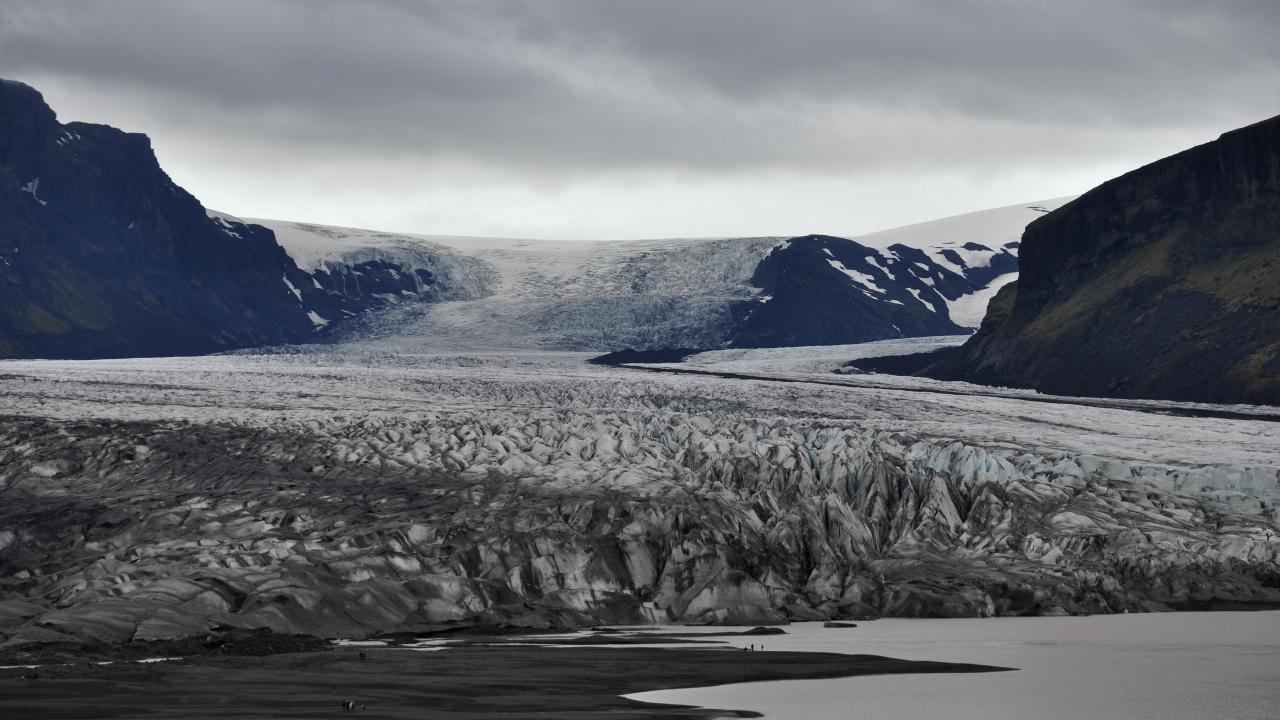
“The heat wave we have experienced in Italy during these days is truly exceptional,” says ICTP scientist Filippo Giorgi. It’s August the 4th and the thermometer outside marks almost 40 degrees, but he doesn’t seem to be much worried about it. “We are all very concerned, but winter heat waves are just as alarming. Yet, no one ever talks about them,” he says. “Their consequences on the environment, especially on the fragile mountain ecosystems, are serious.”
Professor Giorgi co-authored a study recently published in Scientific Reports, documenting the occurrence of one of these winter heat waves in the eastern Alps in December 2015 [1]. The paper investigates the causes and the potential consequences on alpine glaciers of this unprecedented event.
Professor Giorgi, what was so extraordinary about December 2015?
Globally, the year 2015 has been the second warmest (after 2016) on record in the last 150 years. At the beginning of 2016, Dr Renato R. Colucci, first author of the paper, ran into my office with some extraordinary data he collected in December. Measurements referred to four high elevation sites, randomly selected in the region between Italy, Austria and Slovenia: Canin (2203 m), Triglav (2514 m), Villacher Alpe (2140 m) and Sonnblick (3150 m). For the first time in hundreds of years, the surface mean temperature of these glaciers remained high, most of them above zero, during the entire month. It was an exceptional anomaly: an anomaly of more than 7 degrees.
 |
The location of the four glaciers considered in the study is shown in (a). The temperature anomaly averaged over the four high elevation sites is shown in (b). Observed mean December temperature at Sonnblick (c), Villacher Alpe (d), Canin (e) and Triglav (f) glaciers [1].
What do you mean by “anomaly”?
We talk about “anomalous temperature condition” when the recorded temperature is 5-6 degrees higher than the average value of the past years on that day for more than 6 days. In December 2015, this condition lasted a month, as a deep anticyclonic high pressure area persisted over Europe. Interestingly, this warm anomaly was only found at high mountain elevations: temperatures in Udine or Trieste were not particularly worrying.
Why was that the case?
It is a matter of thermal inversion: according to the normal atmospheric thermal gradient caused by a change in air pressure, temperatures decrease by 7.5 degrees per kilometre height. The unique conditions of fall 2015 led to a “thermal inversion”: it means that the atmosphere was stable enough to prevent any vertical mixing, thus cooling down at the bottom and heating up within the upper layers, where glaciers sit.
Which were the consequences on them?
Cloud-free conditions, associated with high irradiation and little precipitation during autumn likely enhanced to some extent the warm anomaly, and this has contributed to remove the snow layer accumulated over local glaciers. The result could be an unprecedented wintertime glacier ablation.
Is it such a rare event?
Winter ablation is very unlikely to occur. It can sometimes rain for a couple of days at high elevations, which results in temporary ablation, but we have never had ablation-inducing conditions over an entire month before. That’s why 2015 was truly exceptional. Crucial to the survival of a glacier is its mass balance [2], the difference between winter accumulation and summer ablation: the usual annual lifecycle of a glacier starts in winter, when a thick snow layer is deposited on the surface. Under its own pressure, snow turns into ice, increasing the mass of the glacier. In summertime, the upper layer melts but the overall glacier mass remains unvaried. Nowadays, this cycle has been seriously affected all over the globe but, at least in the alpine region, there was no record of winter ablation before 2015.
 |
Photographs of the Canin plateau at 2200 m a.s.l. taken by Dr Renato R. Colucci on 20th October (top left) and 30th December (top right) 2015. Outcropping glacier ice on 30th December 2015 is also shown (bottom) [1].
Which could be the long-term consequences?
Changes in winter temperature and precipitation regimes in mountain environments can affect glacier accumulation/ablation and water resources, and can also have an impact on ecosystem dynamics, biodiversity, forests and tourism.
 |
| Credits: Filippo Giorgi |
Can we ascribe this exceptional event to the highly debated global warming?
Although it is clearly not possible to attribute the specific December 2015 anomaly to global warming, it is interesting to place this anomaly within the context of possible future climate projections for the region [1]. As the increase in heat wave intensity and frequency is one of the most robust signatures of climate change, it will be very interesting to monitor the occurrence of such events in the future.
---- Anna Lombardi
References:
[1] R. Colucci et al. Scientific Reports 7, 7090 (2017)
[2] World glacier monitoring service: http://wgms.ch/latest-glacier-mass-balance-data/
















